10 Steps of Muscle Contraction
1/9
There's no tags or description
Looks like no tags are added yet.
Name | Mastery | Learn | Test | Matching | Spaced |
|---|
No study sessions yet.
10 Terms
Step 1 - Nerve Impulse reaches Neuromuscular Junction
Nerve signal from brain arrives at neuromuscular junction & axon terminal of motor neuron
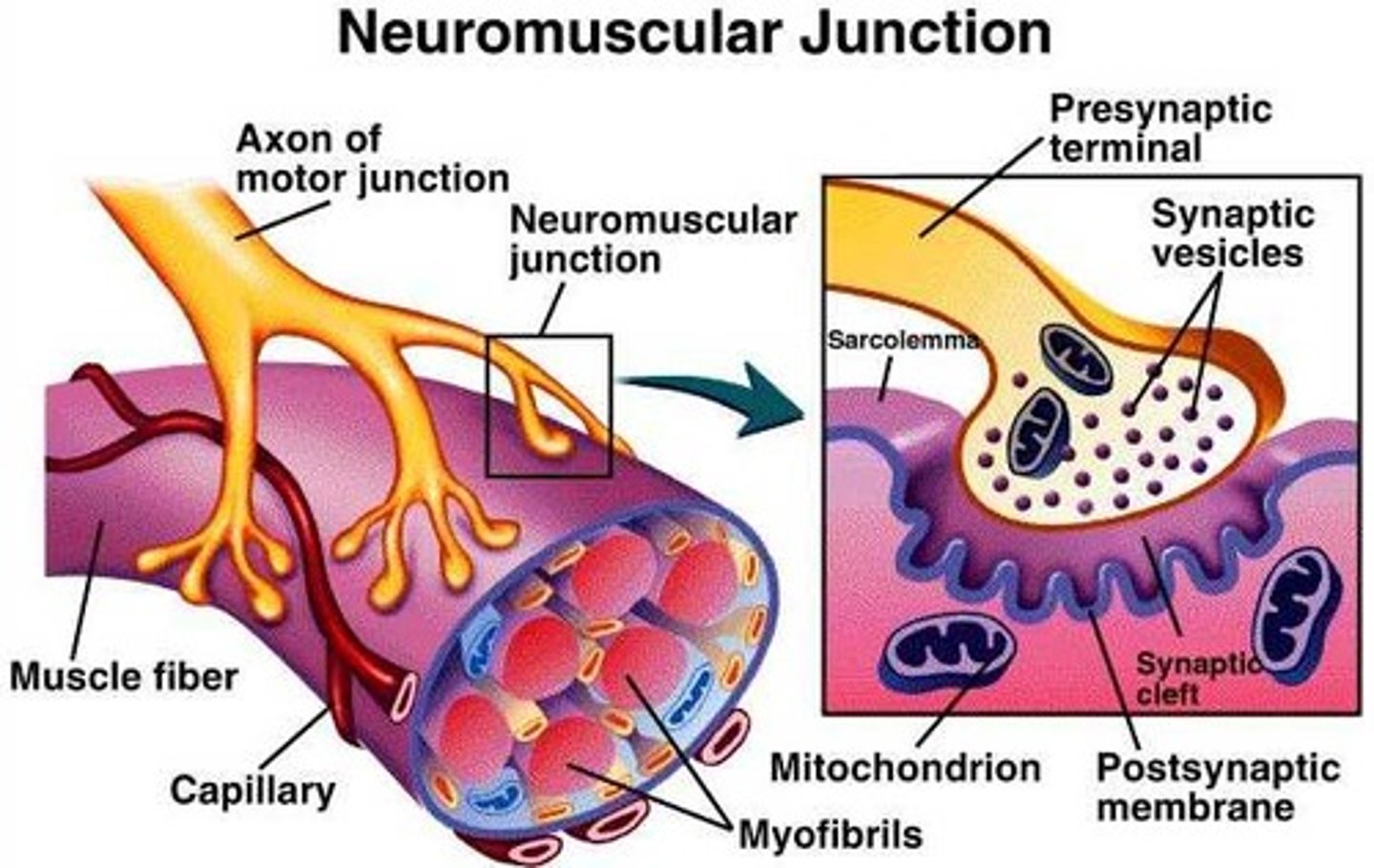
Step 2 - Acetylcholine (ACH) Released by Motor Neuron
Motor neuron releases neurotransmitter Acetylcholine (Ach) into synaptic gap between nerve & muscle cells
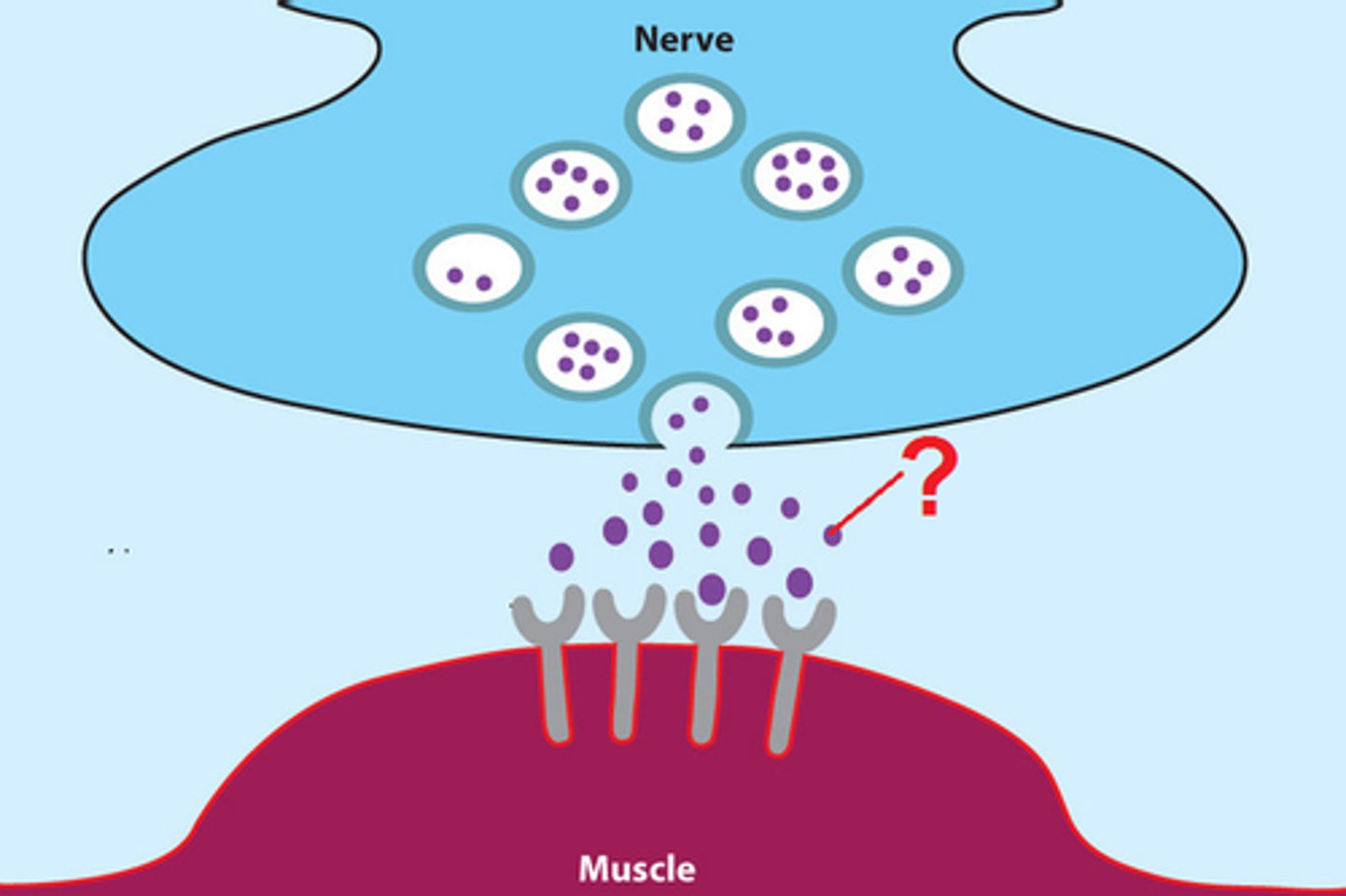
Step 3 - ACH binds to Muscle Receptor Sites
ACH (key) binds to receptors on the muscle cell
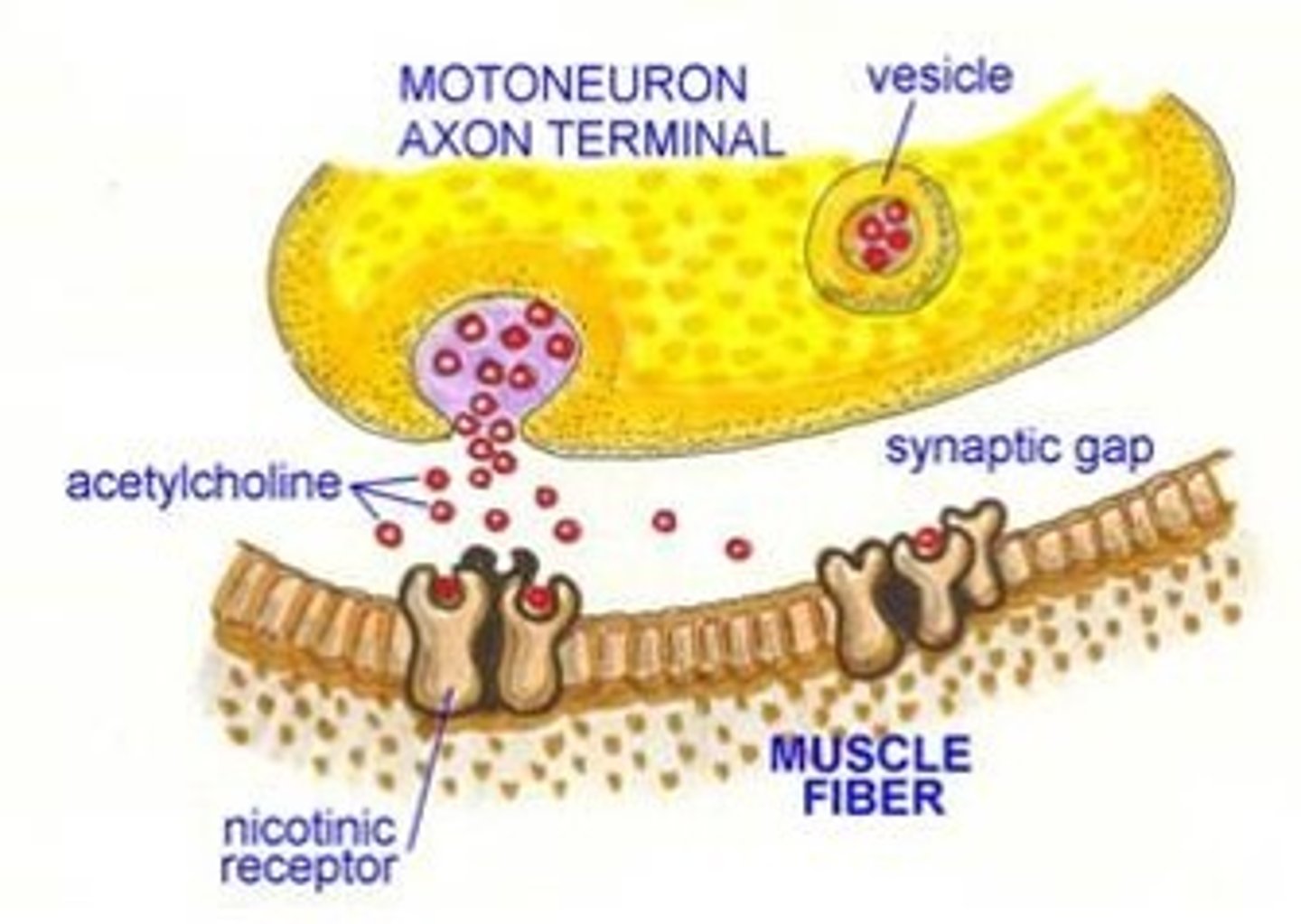
Step 4 - Sodium Channels in muscle OPEN
Receptors stimulated by ACH allow sodium (Na+) channels in muscle cell to open
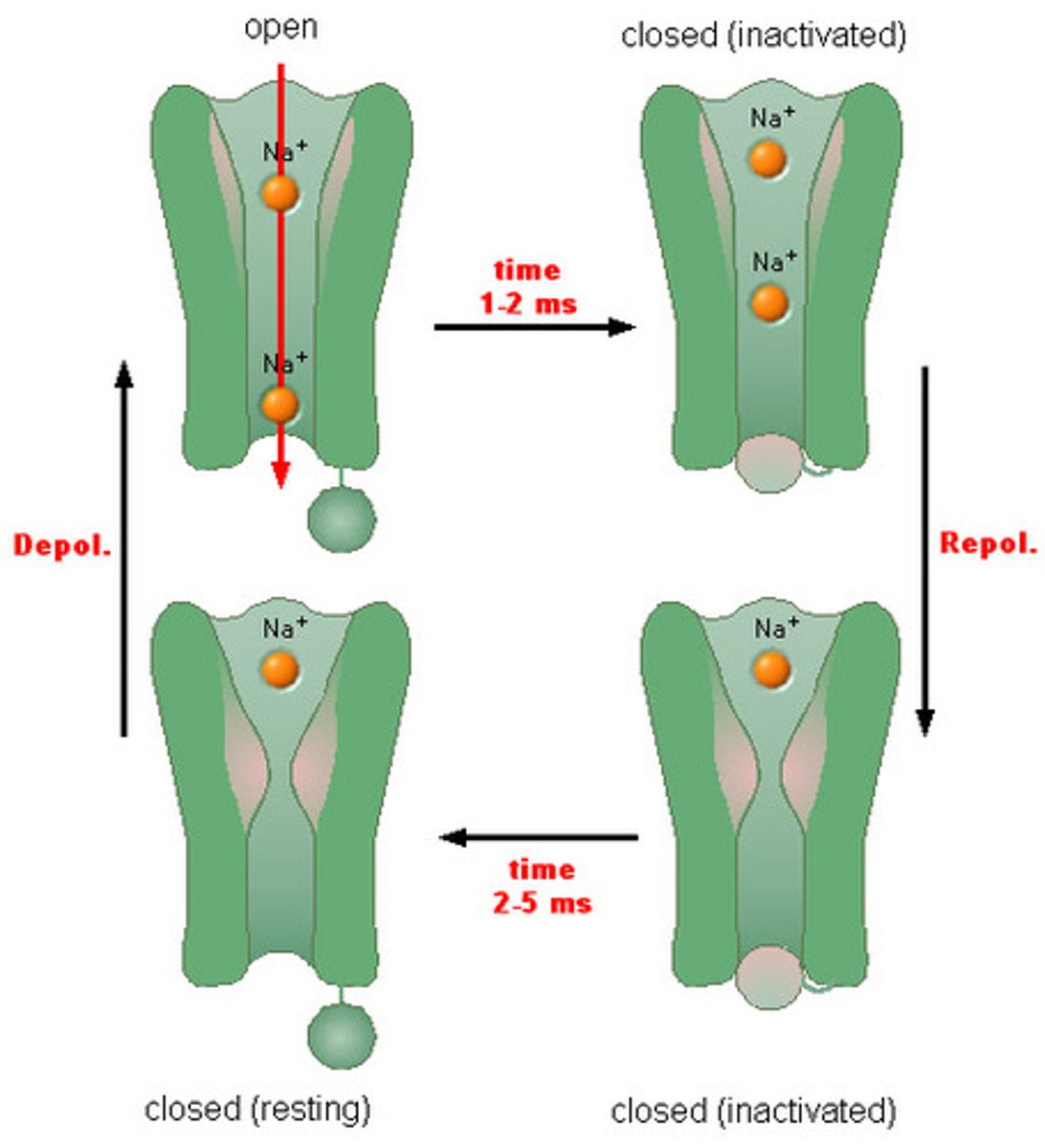
Step 5 - Na+ Ion rush causes change in cell charge
Na+ influx into muscle cell causes polarity change, creates electrical current called an Action Potential
Step 6 - Action Potential charge travels down muscle cell
Action Potential impulse travels down the sarcolemma membrane and all over the muscle cell
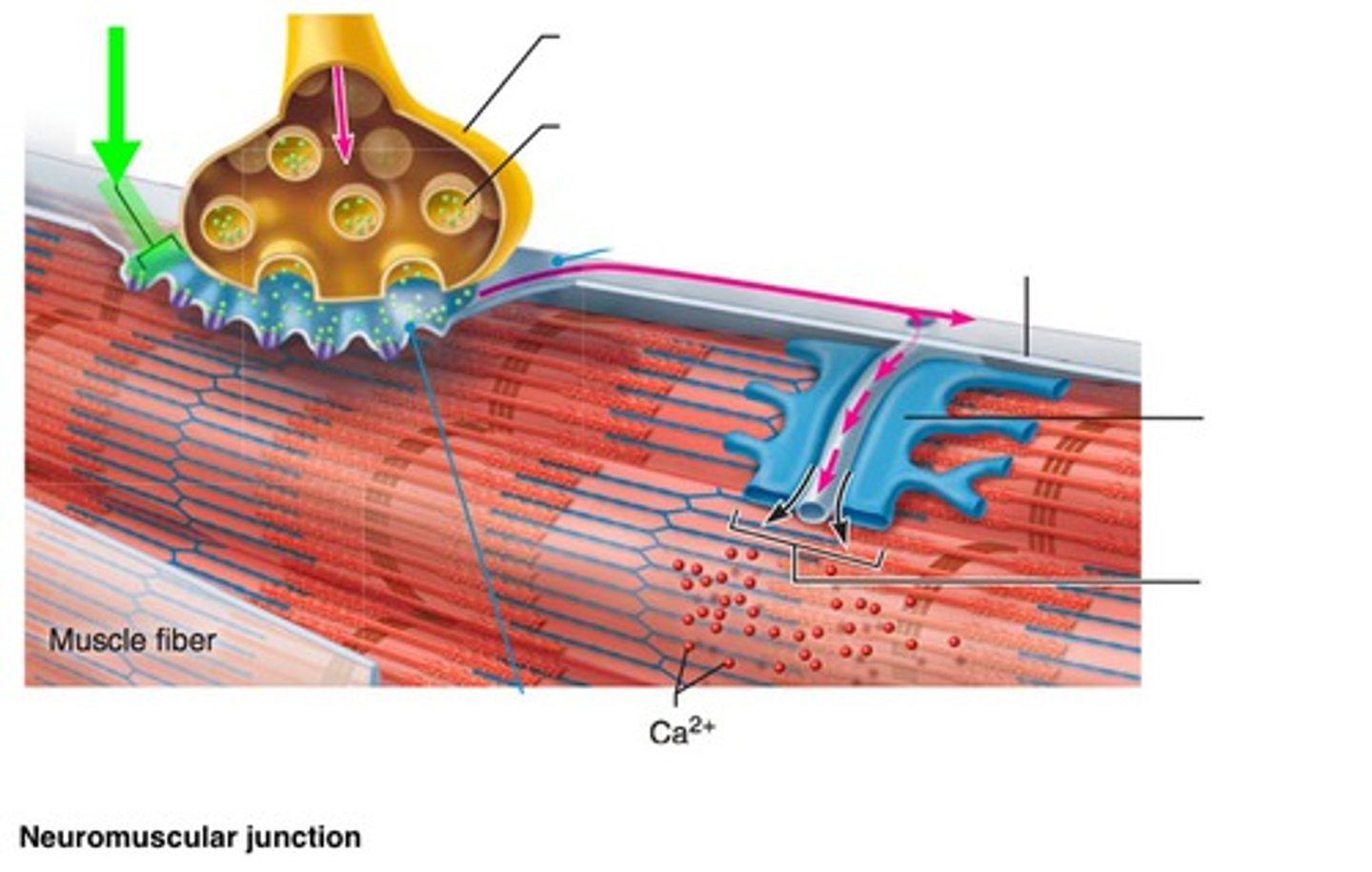
Step 7 - Release of Ca+ into cell
Action potenial impulse causes the sarcoplasmic reticulum web to release stored Ca++ into the cell and around sarcomere contraction units

Step 8 - Ca+ influx causes Myosin & Actin to bind
Inside sarcomeres, Ca++ ions allow myosin heads to fit onto actin filaments
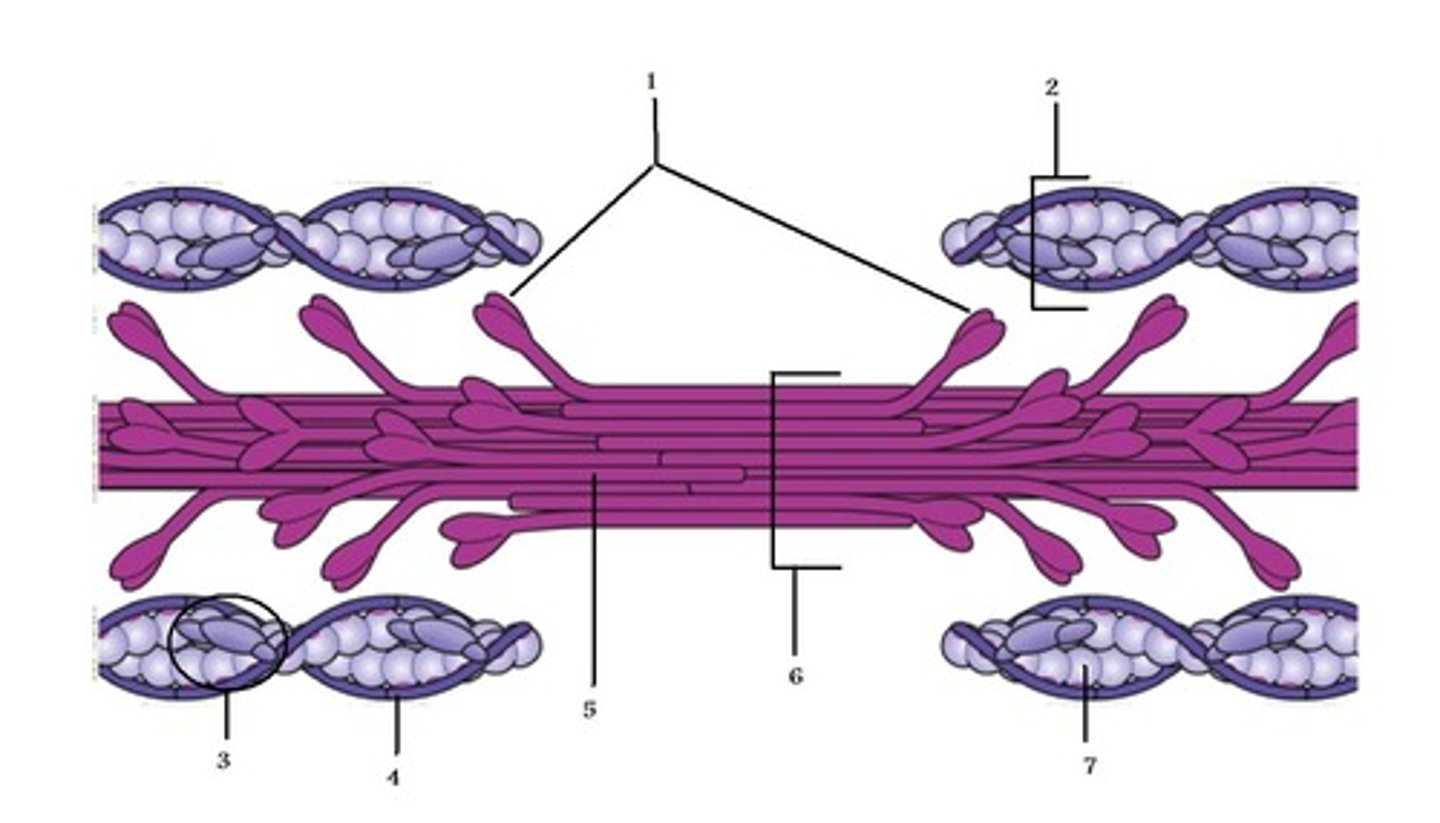
Step 9- CONTRACTION
Myosin & Actin move, Sacromere shortens
Myosin heads "pull" Actin filaments toward center, allowing filaments to slide past each other in opposite directions, shortens sacromere
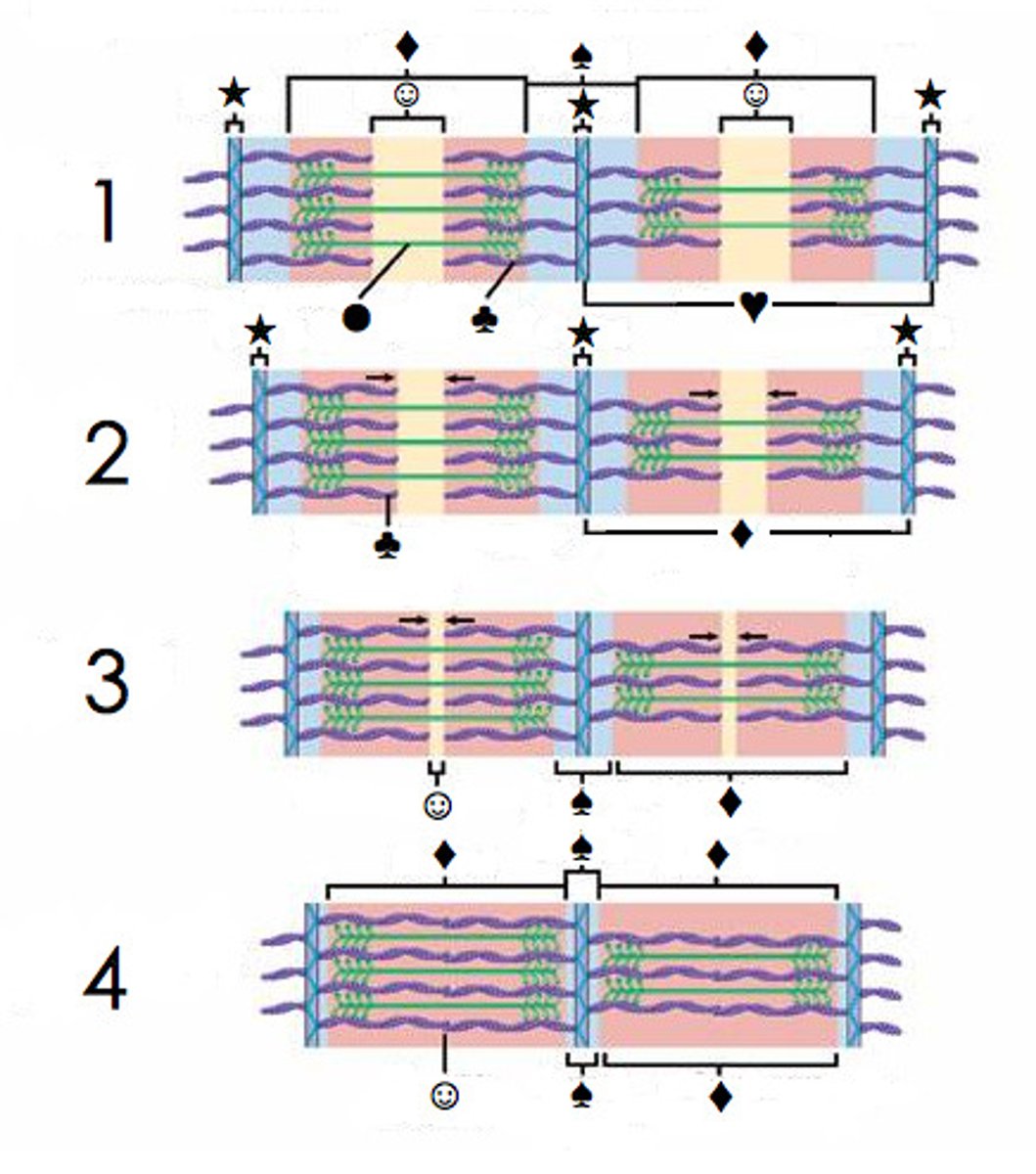
Step 10 - RELAXATION
When action potential ends, Ca++ is reabsorbed by sacroplasmic reticulum, myosin & actin return to orginal position, and muscle relaxes